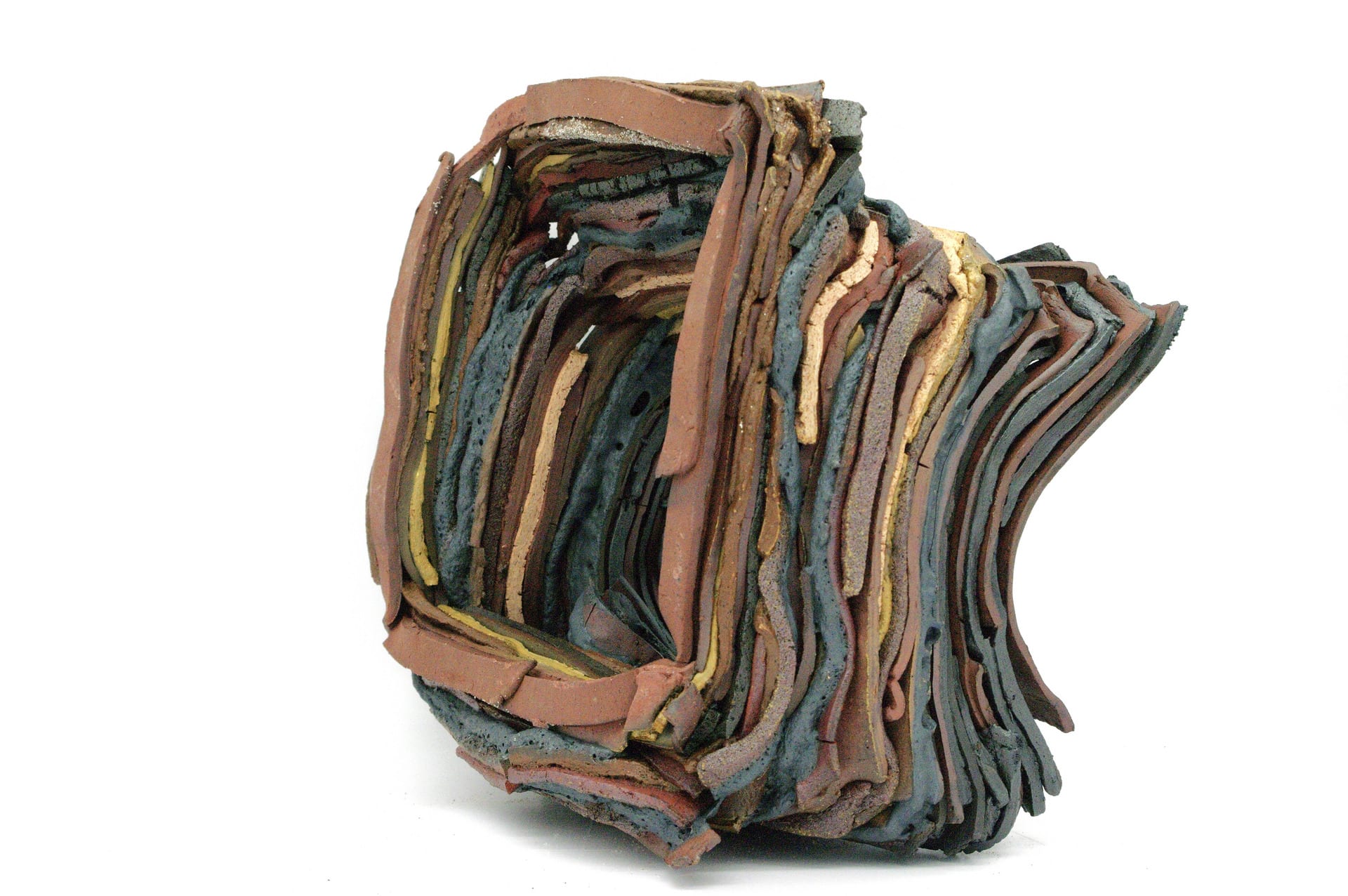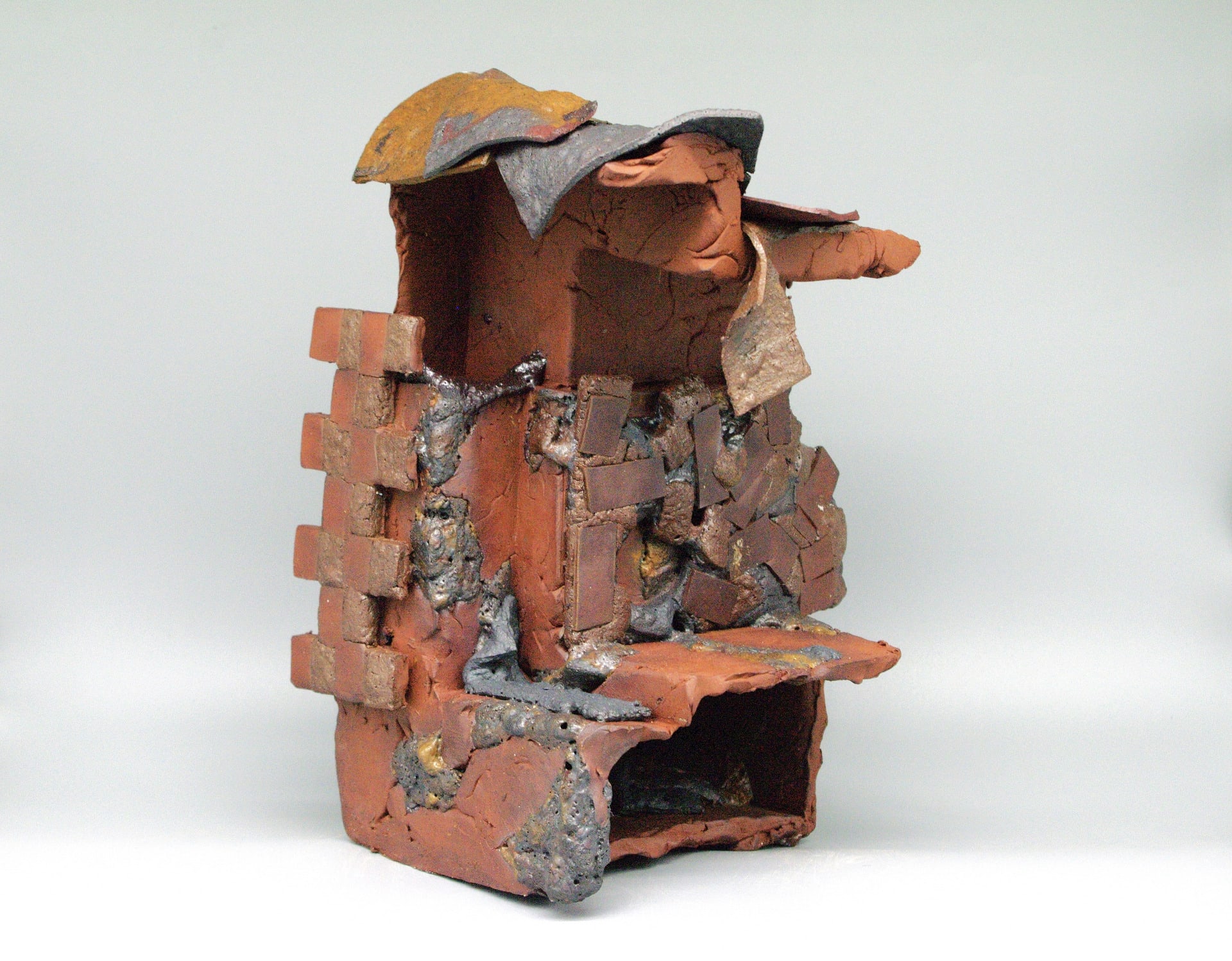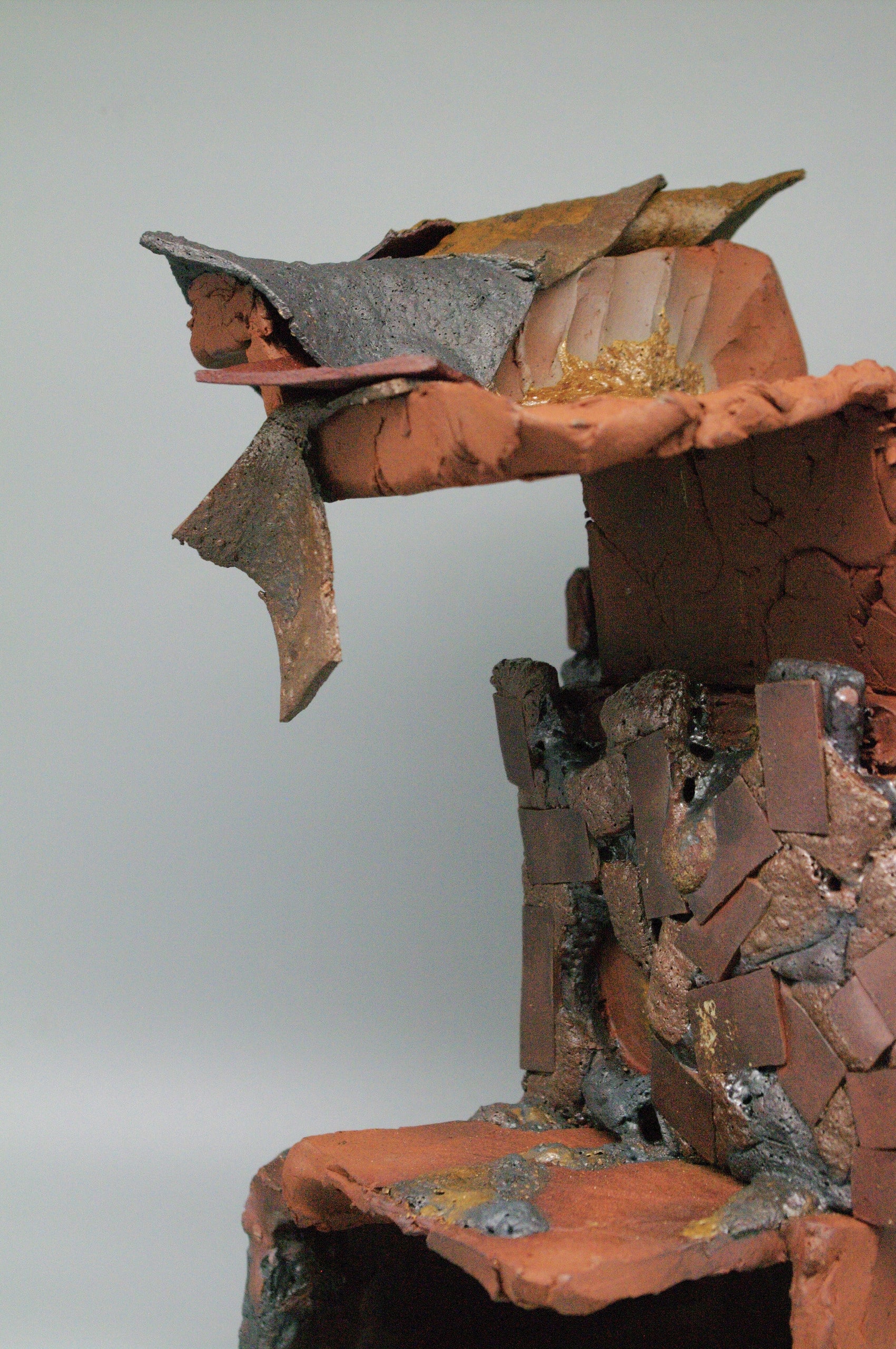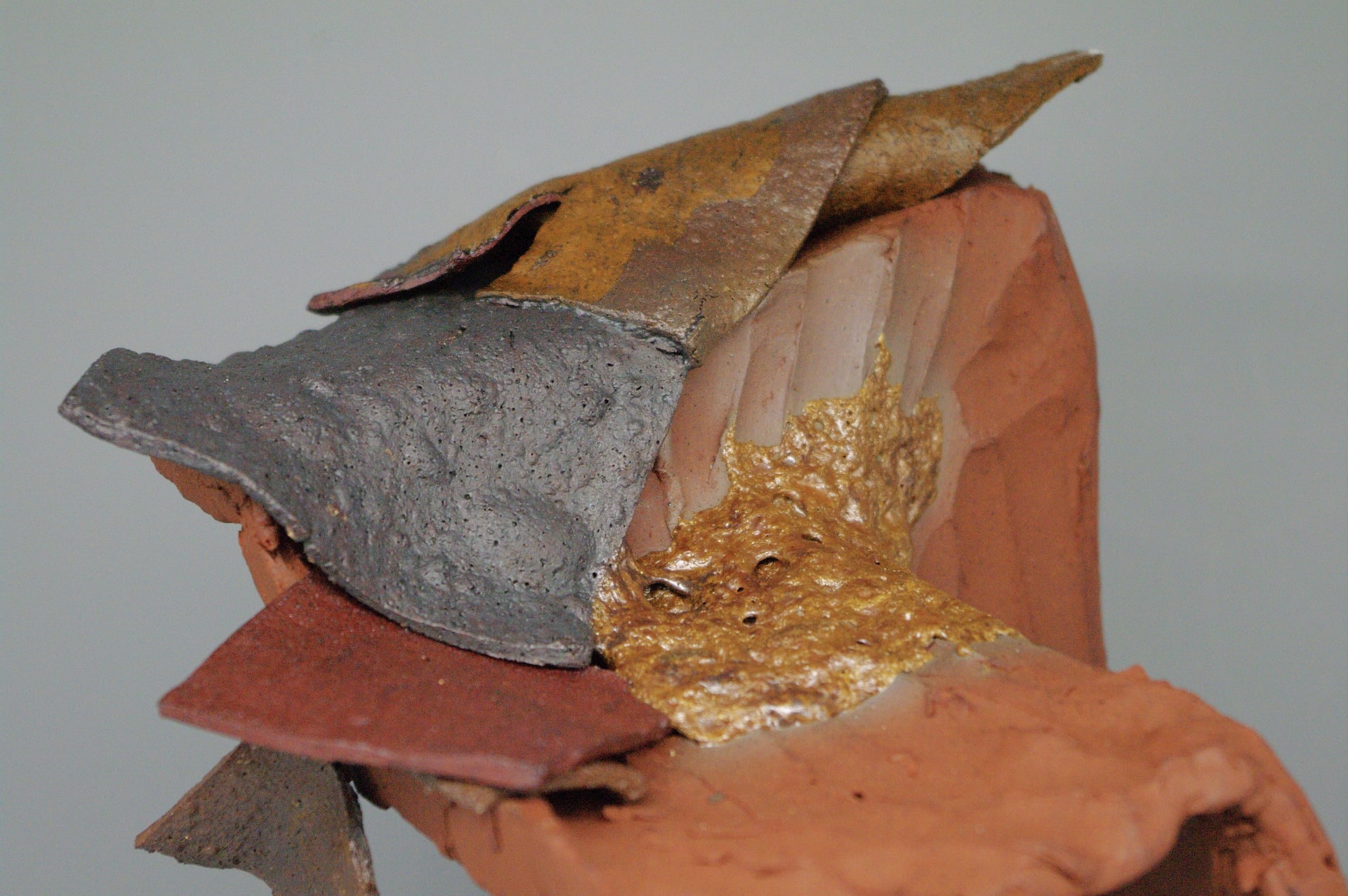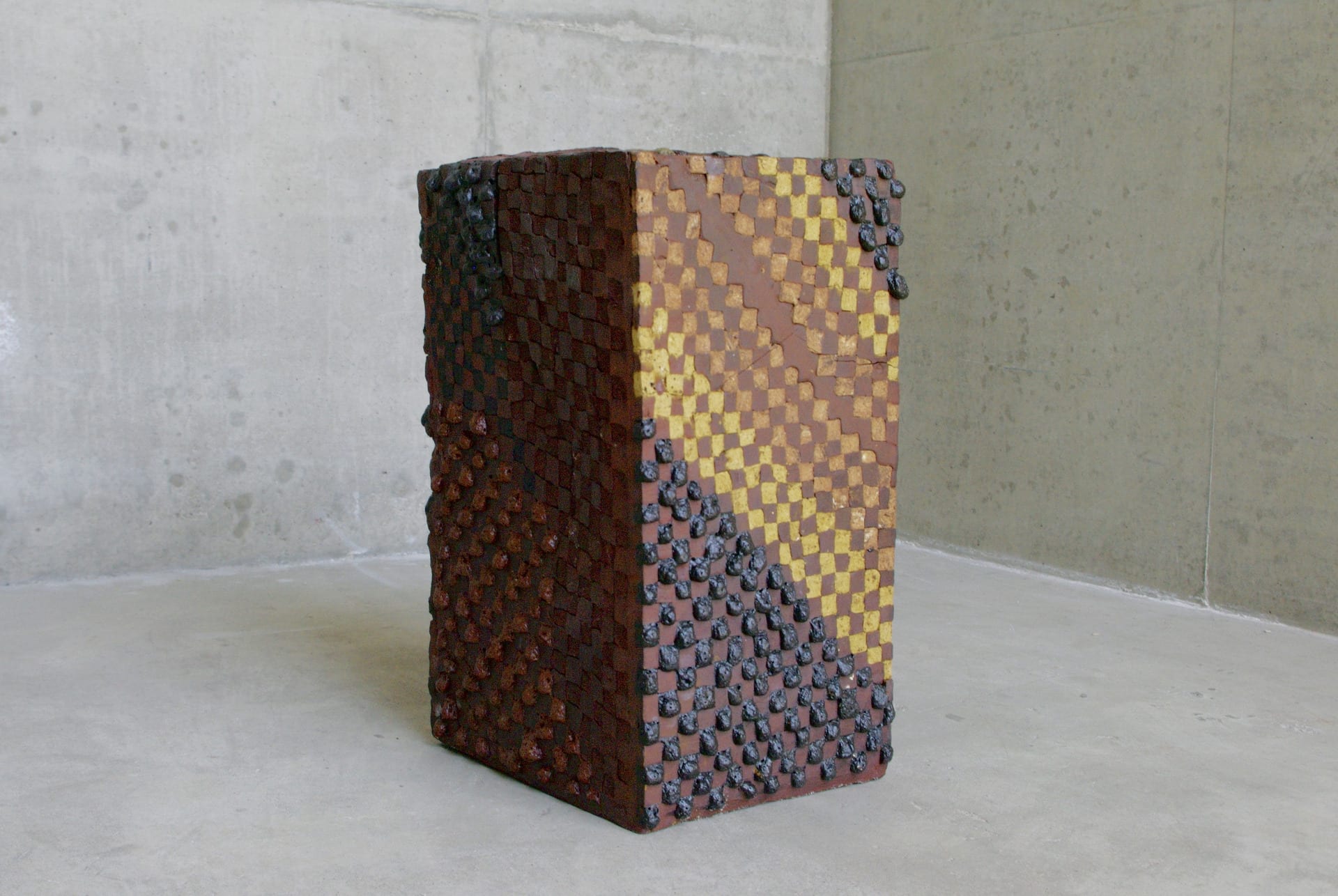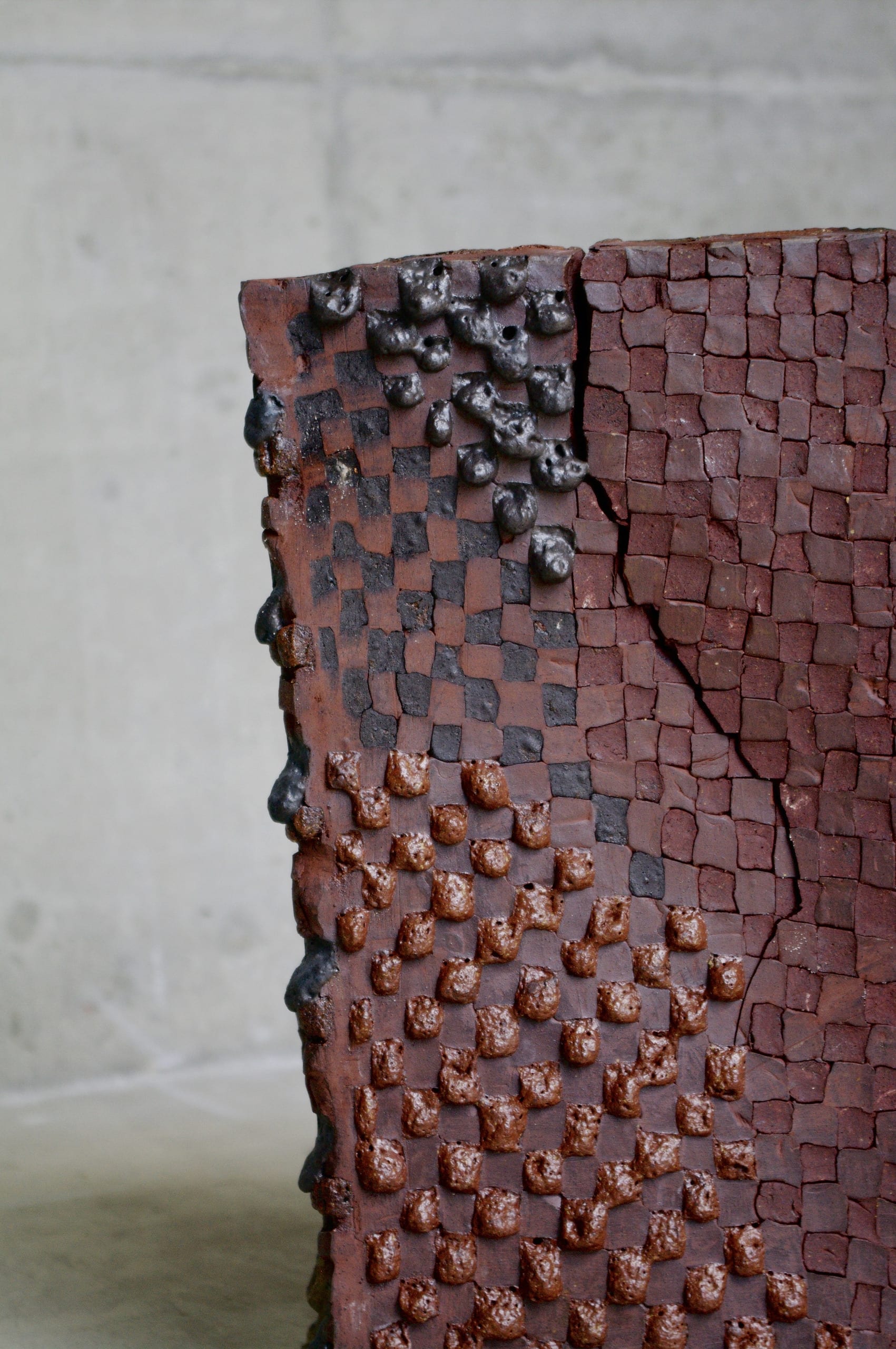Jeanne François (b.1999) is a french ceramist and sculptor whose work revolves around wild clays and the exploration of the land. She encountered clay as a child, playing with mud, rocks, modelling and raku firing with her dad in the back garden of their house in the Alps. After briefly studying literature, she moved to Paris and obtained a BA degree in Object Design and Ceramics, with first class honours. She is currently graduating from a 2-year MA in Ceramics & Glass at the Royal College of Art, London.
In 2020, she collaborated with the collective Barro Pequeno, based in Santiago de Chile, to create a collection of vases for children made from local clay. Since 2021, she has been working alongside industrial groups and designers’ collectives such as ECT and Golden Earth to reclaim excavated soils in her ceramics, from Paris to London. In 2022, she spent the summer in art residency Sachaqa Centro de Arte, in the Peruvian Amazon. Immersed in the Kechwa culture, she dug into the landscape while beginning a journey of experimentation with performance firings.













